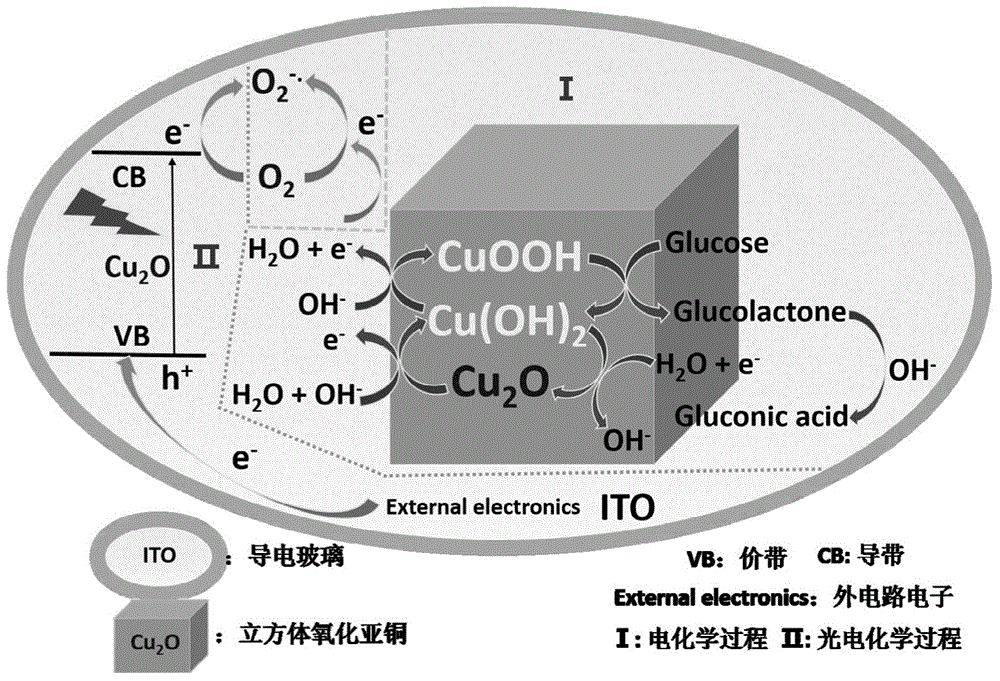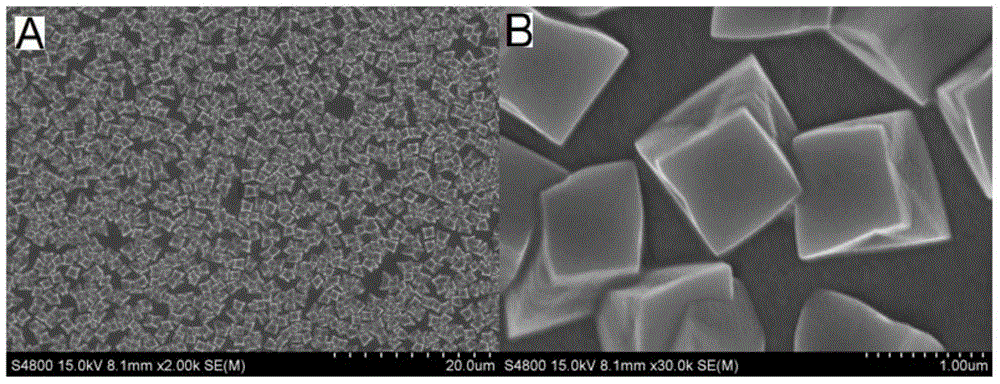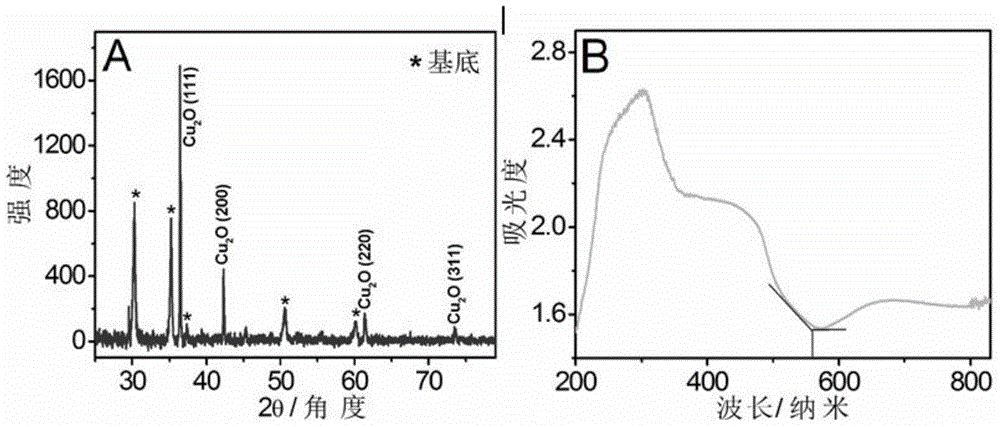Construction method and detection method of cuprous oxide membrane-based enzyme free-oxygen sensitive glucose photo electrochemical sensor
A cuprous oxide and photoelectrochemical technology, applied in the field of photoelectrochemical sensor construction, can solve the problems of glucose oxidase instability, expensive gold/platinum nanoparticles, lengthy modification of electrode steps, etc., and achieve low detection signal background and high detection Sensitivity and stability, effect of low detection limit
- Summary
- Abstract
- Description
- Claims
- Application Information
AI Technical Summary
Problems solved by technology
Method used
Image
Examples
Embodiment 1
[0036] Embodiment 1: A method for constructing a cuprous oxide film-based non-enzyme-oxygen sensitive glucose photoelectrochemical sensor, comprising the following steps:
[0037] (1) Cut the ITO conductive glass into a size of 1 cm × 4 cm, and contain 1mol L -1 Sodium hydroxide and 0.6% hydrogen peroxide cleaning solution for cleaning, after cleaning, use acetone and ultrapure water to rinse and dry at room temperature;
[0038] (2) The ITO conductive glass treated in step (1) is used as the working electrode, the platinum wire is used as the counter electrode, and the silver / silver chloride electrode is used as the reference electrode, and the three electrodes are inserted into the electrode containing 0.05mol L -1 copper sulfate and 0.1mol L -1 In the sodium hydroxide solution of sodium citrate, adjust the concentration of sodium hydroxide in the solution so that the pH value of the solution is 11;
[0039] (3) Under the condition that the deposition temperature is 50°C t...
Embodiment 2
[0052] Embodiment 2: a method for constructing a cuprous oxide film-based non-enzyme-oxygen sensitive glucose photoelectrochemical sensor, comprising the following steps:
[0053] (1) Cut the ITO conductive glass into a size of 1 cm × 4 cm, and contain 1mol L -1 Sodium hydroxide and 0.6% hydrogen peroxide cleaning solution for cleaning, after cleaning, use acetone and ultrapure water to rinse and dry at room temperature;
[0054] (2) The ITO conductive glass treated in step (1) is used as the working electrode, the platinum wire is used as the counter electrode, and the silver / silver chloride electrode is used as the reference electrode, and the three electrodes are inserted into the electrode containing 0.02mol L -1 Copper sulfate and 0.05mol L -1 In the sodium hydroxide solution of sodium citrate, adjust the concentration of sodium hydroxide in the solution so that the pH value of the solution is 10;
[0055] (3) Under the condition that the deposition temperature is 50°C ...
Embodiment 3
[0062] Embodiment 3: a method for constructing a cuprous oxide film-based non-enzyme-oxygen sensitive glucose photoelectrochemical sensor, comprising the following steps:
[0063] (1) Cut the ITO conductive glass into a size of 1 cm × 4 cm, and contain 1mol L -1 Sodium hydroxide and 0.6% hydrogen peroxide cleaning solution for cleaning, after cleaning, use acetone and ultrapure water to rinse and dry at room temperature;
[0064] (2) The ITO conductive glass treated in step (1) is used as the working electrode, the platinum wire is used as the counter electrode, and the silver / silver chloride electrode is used as the reference electrode, and the three electrodes are inserted into the electrode containing 0.08mol L -1 copper sulfate and 0.2mol L -1 In the sodium hydroxide solution of sodium citrate, adjust the concentration of sodium hydroxide in the solution so that the pH value of the solution is 12;
[0065] (3) Electrodeposit for 30 minutes at a deposition temperature of ...
PUM
| Property | Measurement | Unit |
|---|---|---|
| Size | aaaaa | aaaaa |
Abstract
Description
Claims
Application Information
 Login to View More
Login to View More - R&D
- Intellectual Property
- Life Sciences
- Materials
- Tech Scout
- Unparalleled Data Quality
- Higher Quality Content
- 60% Fewer Hallucinations
Browse by: Latest US Patents, China's latest patents, Technical Efficacy Thesaurus, Application Domain, Technology Topic, Popular Technical Reports.
© 2025 PatSnap. All rights reserved.Legal|Privacy policy|Modern Slavery Act Transparency Statement|Sitemap|About US| Contact US: help@patsnap.com



